Personal protective equipment
There are various items of personal protective equipment (PPE) that timber workers need to wear, depending on their job role and the task they’re undertaking.
Clothing
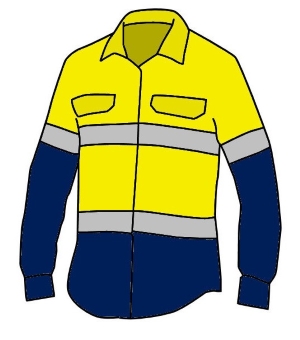
High visibility clothing is necessary for anyone who works near moving vehicles, forklift trucks or other mobile plant. The most common hi-vis colours are yellow and orange; however, green and pink are also approved colours.
Some companies also specify reflective strips, especially for personnel who work at night or in areas that are poorly lit. Outdoor workers might also be required to wear a long-sleeved shirt to protect their arms from sunburn.
Boots
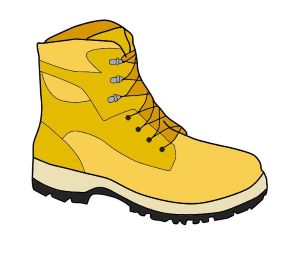
Safety boots have steel caps in the toe area to protect the wearer’s feet from heavy blows or sharp objects. They are generally mandatory for personnel who work in production areas.
Harvesting operators, chainsaw operations and bush workers also typically wear lace-up boots with high ankle support (as opposed to having elastic sides) to provide extra ankle protection when walking over rough terrain or on uneven ground.
Hardhat
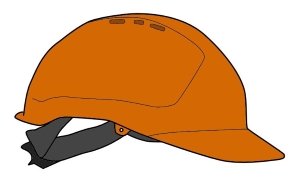
Hard hats, also called safety helmets, are designed to help cushion the blow from overhead obstacles or objects that might fall from above. Areas where a hard hat is needed include bushland, around mobile plant, under a gantry crane, or anywhere else where head protection is required.
Most models of hard hats also have fixing points for ear muffs and a face visor.
Ear muffs
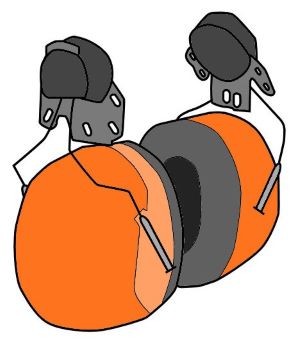
Ear muffs or ear plugs are required for anyone operating or working near noisy machinery. Keep in mind that it’s not just the loudness of a noise that determines the level of hearing loss you may suffer. The length of time you’re exposed to the noise is also a factor.
This is why industrial noise that doesn’t seem uncomfortably loud can still cause long-term hearing damage if you're subjected to it for several hours every day.
Safety glasses
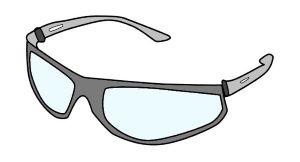
Safety glasses help to protect your eyes from flying particles or dust in the air. The lenses are generally made from polycarbonate material, which is lightweight and shatter resistant. Outdoor workers should wear glare-reducing tinted glasses.
Some workplaces require everyone to wear safety glasses when they’re in production areas.
Face shield
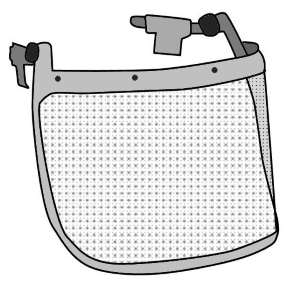
Whenever there is a risk of flying particles hitting you in the face, such as while operating a chainsaw or chipper, you should wear a full face shield.
The face shield (or ‘visor’) shown at right is made of steel mesh and is designed to clip onto a hard hat. The main advantage of mesh over polycarbonate is that it provides a good airflow and doesn’t fog up while you’re working.
Mesh visors are not designed to protect you against fine dust, chemicals or vapours. Workers who are mixing chemicals or doing other work that requires protection from these sorts of hazards should wear a polycarbonate visor and also a respirator if necessary.
Gloves
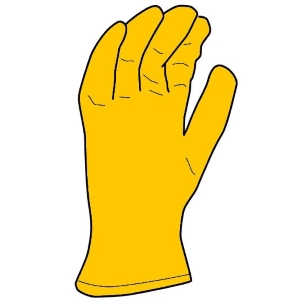
Riggers gloves are designed to protect your hands from cuts, abrasions and splinters. They’re useful when you’re handling timber, steel, chains and any other items that might cause injuries from mechanical abrasion.
Note that there are some machines and tasks where riggers gloves are not recommended, because the glove can get caught on moving materials or at ‘pinch points’ and drag your hand into the machine. This information should be included in the SWMS or SOP for the task.
Riggers gloves are not designed for mixing chemicals, welding or other specialist uses. There are special-purpose gloves for these tasks.
Other items of PPE
There may be other items of PPE required for certain jobs. These items should be specified in the relevant SOP for the task.
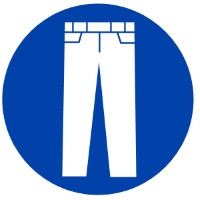 |
Cut resistant trousers – to protect your legs from lacerations while using a chainsaw. Some chainsaw operators wear ‘chaps’, which are designed to be strapped on over the top of your existing trousers. |
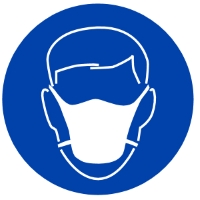 |
Dust mask – to protect your respiratory system from dust and other airborne particles. This may be required when changing sawdust hopper bags, blowing down an area with an air gun, or doing other jobs that generate airborne dust. |
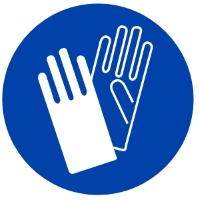 |
Rubber gloves – to protect your hands from chemical exposure. The chemical manufacturer’s SDS will specify what type of gloves are required, and any other PPE that may be necessary. |